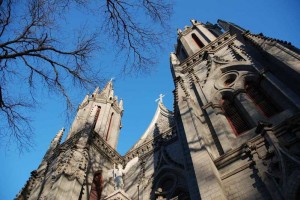Dongjiaominxiang Hutong (Beijing Legation Quarter)
Dongjiaominxiang is the longest Hutong in Beijing, stretching 1.5 kilometers from west to east. The Hutong had been served as Beijing’s diplomatic center for over 700 years, since the Yuan Dynasty. There are many buildings once used for diplomatic affairs along the street, most of them well preserved. Marco Polo mentioned the lane many times in his masterpieces, making the fame of the lane in Western World. Century-old, western-style buildings conspicuously stand out between newer, imposing government offices.
The other name of Dongjiaominxiang is “Beijing Legation Quarter”. Foreigners are familiar with the name by the help of 1900 battle. In 1900, the 55-day battle that took place between the Boxers, who wished to purge the city of foreign influences, and foreign delegates who barricaded themselves in the Legation, ended with the arrival of assistance from the Eight-Nation Alliance. The following Treaty of Xinchou (the International Protocol of 1901), designated Dongjiaominxiang as an embassy zone protected by walls 6 meters tall. Chinese were not allowed to come near, which was considered a particular humiliation at that time. Even the roads around the embassies, which previously were collectively labeled as Dongjiangmixiang, were referred to by their English names.
After 1949, the area of Dongjiaominxiang continued to serve as an embassy zone, with many new diplomatic buildings constructed. Some of the original structures have been well preserved and re-purposed, such as the former Japanese embassy (now the Beijing Municipal People’s Government building), the Germany embassy (now a general clothing store) and the Italian embassy (now the Foreign Friendship Association). Other non-diplomatic buildings on the street continue to betray the foreign influence behind their structures.

